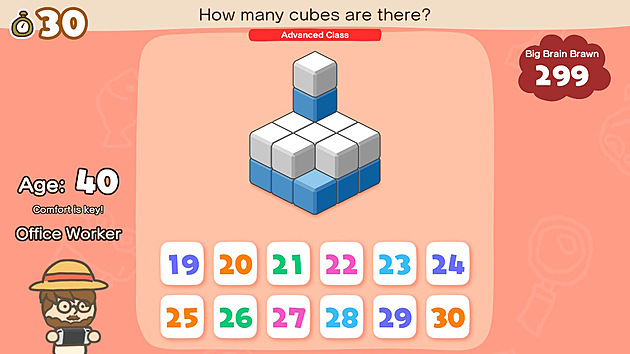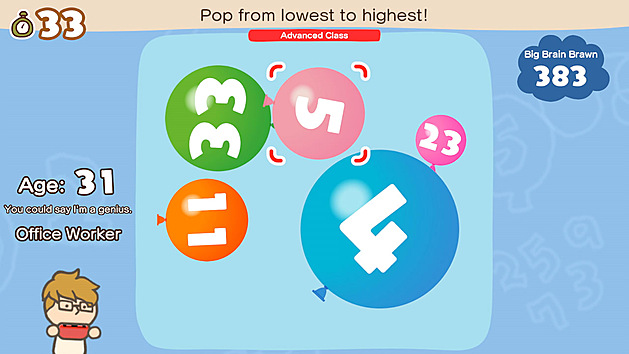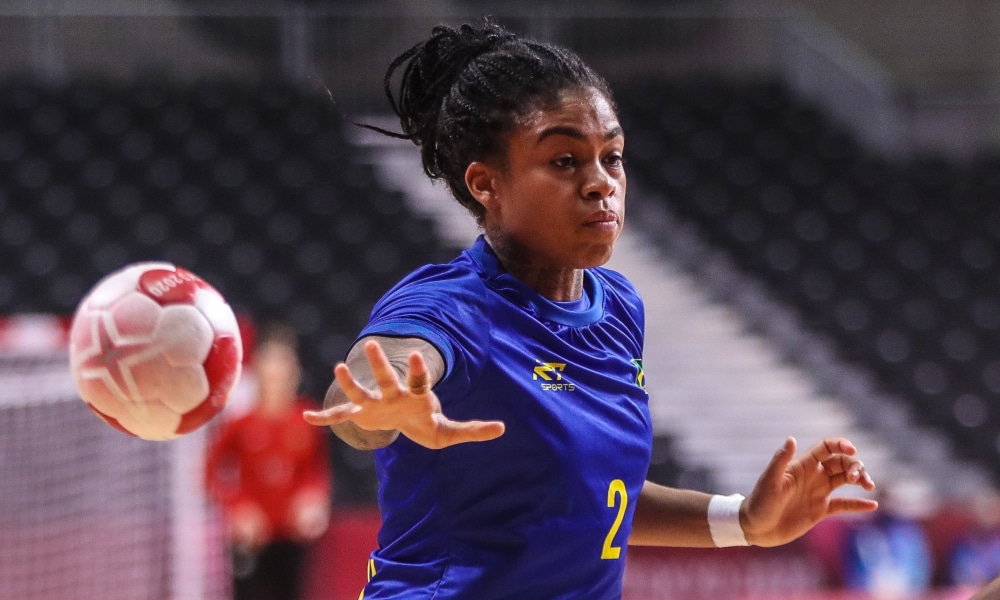If the Nintendo console has been your partner for many years, you will surely remember the era during which games of various qualities were created, the aim of which was to keep our brains in shape. After all, we already have the Dr. application on the Switch. Kawashima’s Brain Training (read a review on Bonusweb), which is under the auspices of neuroscientist Ryuta Kawashima, who claims that regular brain training with puns will help keep your brain fit.
Big Brain Academy: Brain vs. Brain goes a little differently. Although we also go through simple games divided into several categories (identification, memory, analysis, counting, visualization), in significantly better production quality, the novelty does not teach us that sleep is important for brain function, nor does it promise to reduce our chances by exercising. to get Alzheimer’s. Instead, they are betting more on gambling and comparing your skills with other people. Add to that a nice presentation, the result is simply more attractive.
Each of the mentioned categories contains four games, so together we get to twenty pieces. When you get a gold medal for everyone, an even more difficult version will be available. I will discuss the individual games in more detail later, however, they are well processed. The creators have very well grasped the difficulty, which is gradually and most importantly increasing. You can take a test at any time, which calculates your score and graphically shows how you are doing in each category.
Big Brain Academy: Brain vs. Brain
—
The ace up the sleeve is the duel of brains mentioned directly in the name of the game. You can play over the internet (data is only downloaded, it’s not real) and locally, and the point is that you try to solve the game faster than your opponent. The goal is to get to the destination first.
If you play over the internet, you see your opponent, not only how he has decorated the avatar, but also his message. You can play up to four locally. Great is the quick opportunity to play in two on one Switch, where the screen is split in half and everyone plays from one side. It is ideal to have profiles of other family members on the Switch so that you can compare, but guest accounts can also be used and playing over the Internet is also fun.
You get coins and presents for playing and winning. Gamification consists in the fact that you gradually access various cosmetic accessories for your avatar as well as announcements. All this plus your age you will see on the duel card, where you are on one side and your opponent on the other. Sometimes it’s really funny what you see, and most importantly it works as another motivation to keep playing.
I would definitely like each category to include at least one more good game, but given that Big Brain Academy: Brain vs. Brain does not sell at full price, there is nothing to deal with. Needless to say, it’s a good idea to have family members or friends on hand, although to some extent they make up for playing with people over the Internet. And as always, I recommend trying the demo before buying.
Category here
Identification
Whack Match: You are trying to punch the mole over the head with the right picture. It’s tricky later that there are more pictures and not all of them are on the desktop at once.
Species Spotlight: You shine a flashlight in the dark and try to determine which species of animal is most often represented in the room.
Frame Filler: You are adding a missing piece of the image.
Fast Focus: The image is gradually revealed on the desktop and you have to identify what is on it.
Memory
Flash Memory: Numbers or a symbol appear briefly on the display and you must enter them in the correct order.
Memo-Random: There are picture cards on the desktop. Some or all of them turn around and you have to determine who they are.
Reverse Retention: Numbers or pictures will appear on the display and you must specify which, but this time from the last one.
Covered Cages: There are cages on the surface, some have birds. The cages are then covered and shuffled, and you must determine which birds are in.

Big Brain Academy: Brain vs. Brain
—
Analysis
Cubegame: The goal is to count the number of cubes on the board.
Heavyweight: There are various objects on the scales in the picture and you have to determine which is the hardest.
Match Blast: You break blocks to get the same shape as the master. Gravity works here, later it is necessary to take into account that the blocks have to move.
Speed Sorting: Depending on the input, you determine what is the fastest, largest, and so on in the image.
Counting
Add Agency: You select two cards to get the same number of items as the original.
Mallet Math: You break blocks with numbers so that only those that, when added up, give the required amount remain.
Tick-Tock Turn: You rewind according to the hour. At the beginning you have to set the third hour, for example, later the game will prompt you to rewind the clock 255 minutes and so on.
Balloon Burst: You burst balloons with numbers from the smallest to the largest. Classic catchers are different sizes of balloons and negative numbers.

Big Brain Academy: Brain vs. Brain
—
Visualization
Get In Shape: You compose the desired image from different pieces. Again, be careful not to get caught.
Shadow Shift: You see different shadows and you try to determine which objects belong. To make matters worse, the shadows overlap.
Train Turn: My favorite game. You determine which missing tracks to place on the track so that the train reaches its destination. Easy? Wait for the surface to start rotating.
True View: Another stone. You try to use the arrow to determine what the image would look like if you looked at it from that perspective. Motion will be added to still images later.
– .


